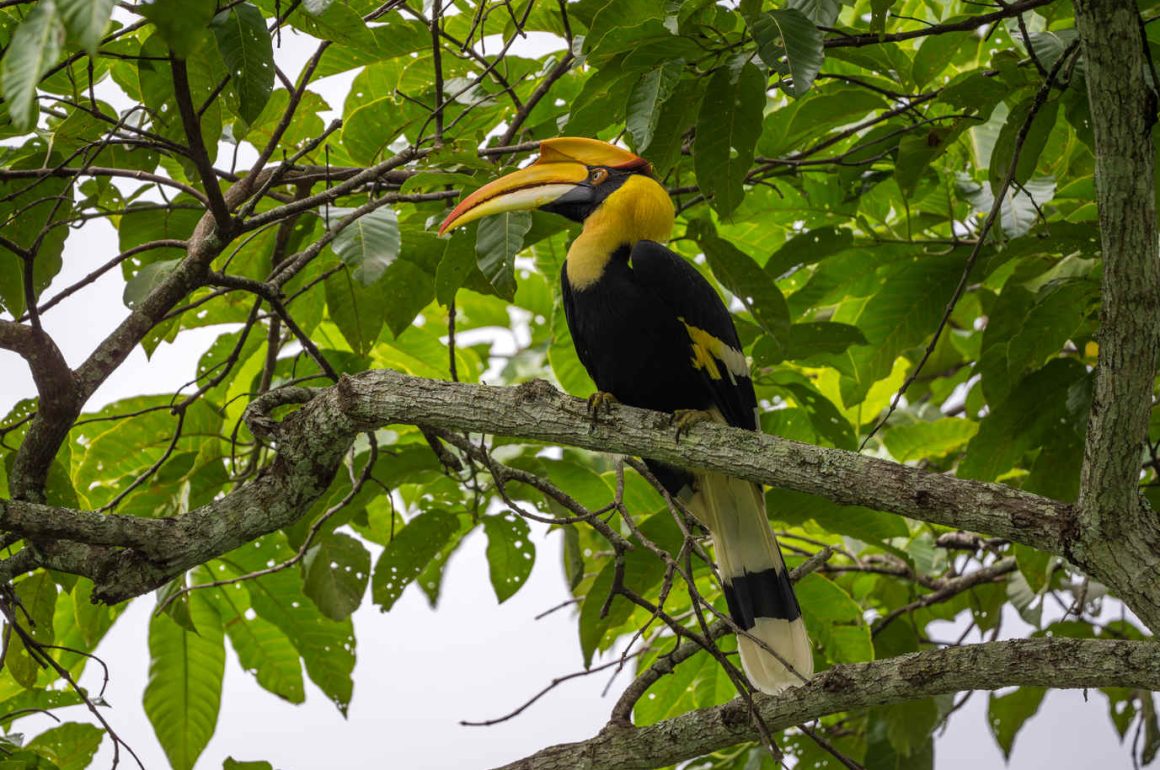
A 2003 scientific paper starts with the sentence, “The population … in the United States is rapidly aging.” If that comes as a surprise to you, it is probably because I cut out some parts of the sentence. The full quotation would be
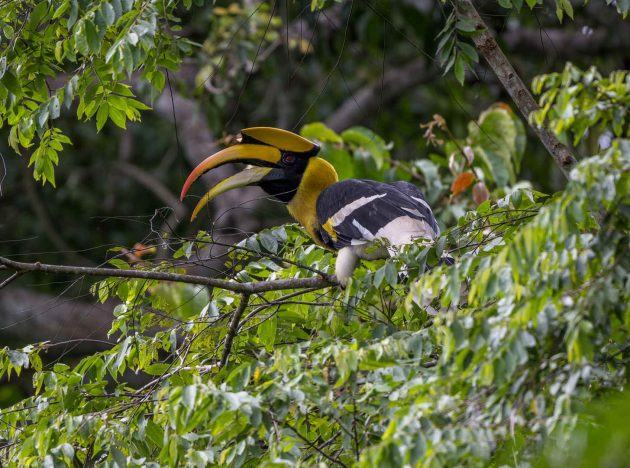
“The population of Great Hornbills (Buceros bicornis) in the United States is rapidly aging, and captive breeding efforts have not met population managers’ expectations for a sustainable captive group.”
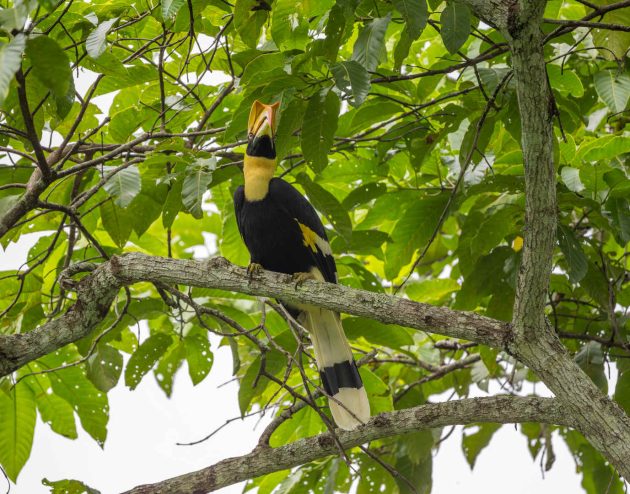
One reason – emphasized in a later paper – is that mate compatibility is thought to be important for successful reproduction (unfortunately, the second sentence of the abstract of that paper is “Within AZA, great hornbills are listed as a red SSP”, which probably is no hurdle for the 90% of 10,000 Birds readers who know that AZA is the Association of Zoos and Aquariums, SSP is the Species Survival Plan and a red SSP means a high prioritization – but it was one for me).
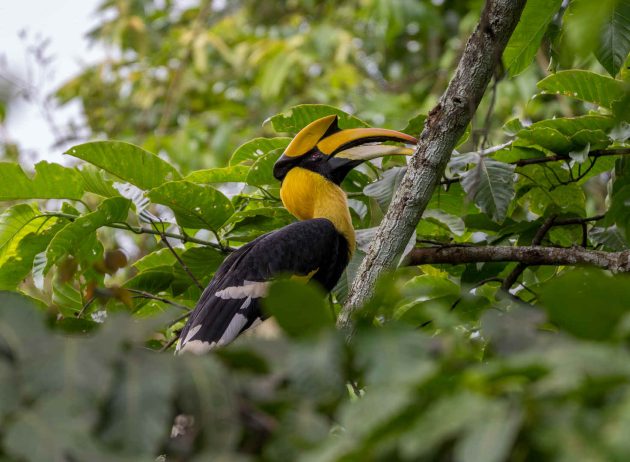
Captive breeding programs are important as the species is listed as Vulnerable due to the usual suspects, evil people (or to put it in more neutral terms, habitat degradation, loss of large nest trees, as well as hunting and trapping).
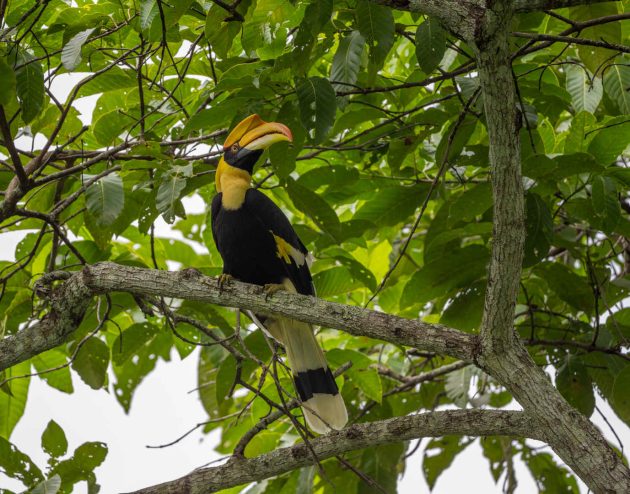
While said humans – particularly venture capitalists – care a lot about unicorns, the Great Hornbill is proud to have two (in the shape of the double-pointed casque), which is reflected in its scientific name Buceros bicornis.

These casques are also used in aerial casque-butting between males, probably in disputes over territory (source).
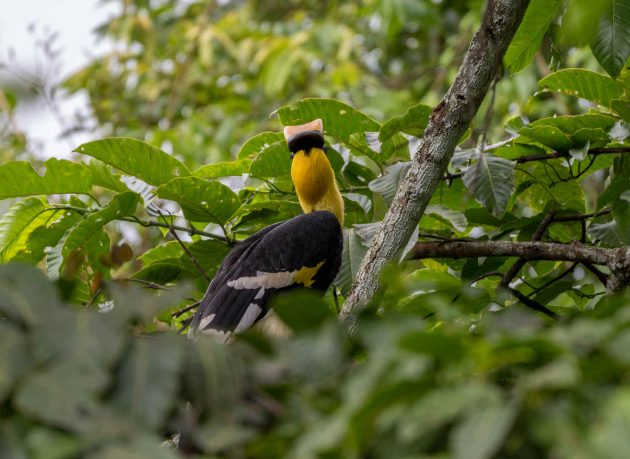
What happens if the casque has a problem – for example, due to a carcinoma? A paper describes a solution for that – the use of a 3D-printed prosthesis to replace the affected part of the casque.

Finally, while the “Great” in the species’ name suggests that this is the biggest of hornbills, the Southern Ground Hornbill is actually heavier and has a longer wingspan. So, the Great Hornbill can only claim the title of “biggest flying hornbill”, which then is similar to companies definining their market in a convoluted way that allows them to claim market leadership (“We are the No. 1 provider of gluten-free, organic, fair-trade, single-origin coffee pods in biodegradable packaging sold exclusively at airports in the Midwest”).
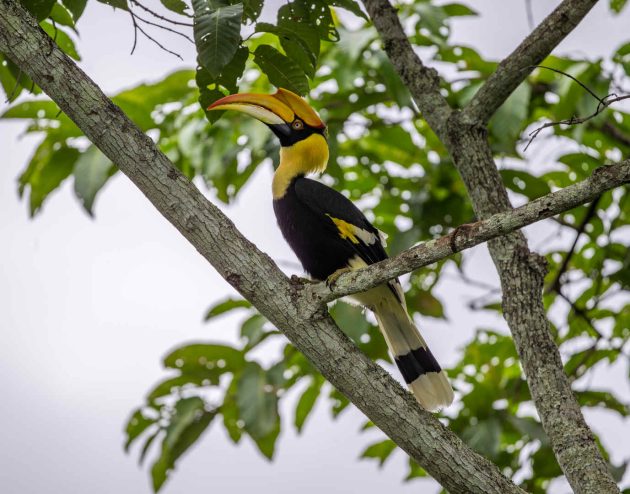
Photos taken at Kaeng Krachan National Park, Thailand, in July 2025










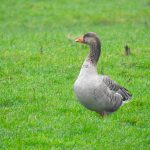
A great hornbill indeed. Saw one flying over Johor’s rainforest decades ago. Urgently need to reconnect with this magnificent beast.